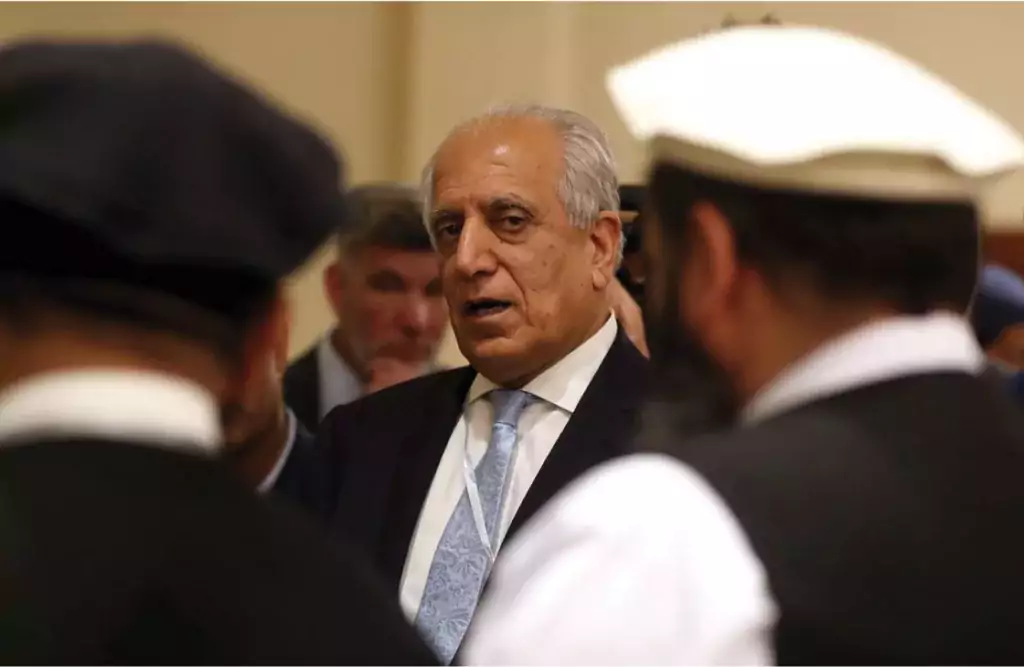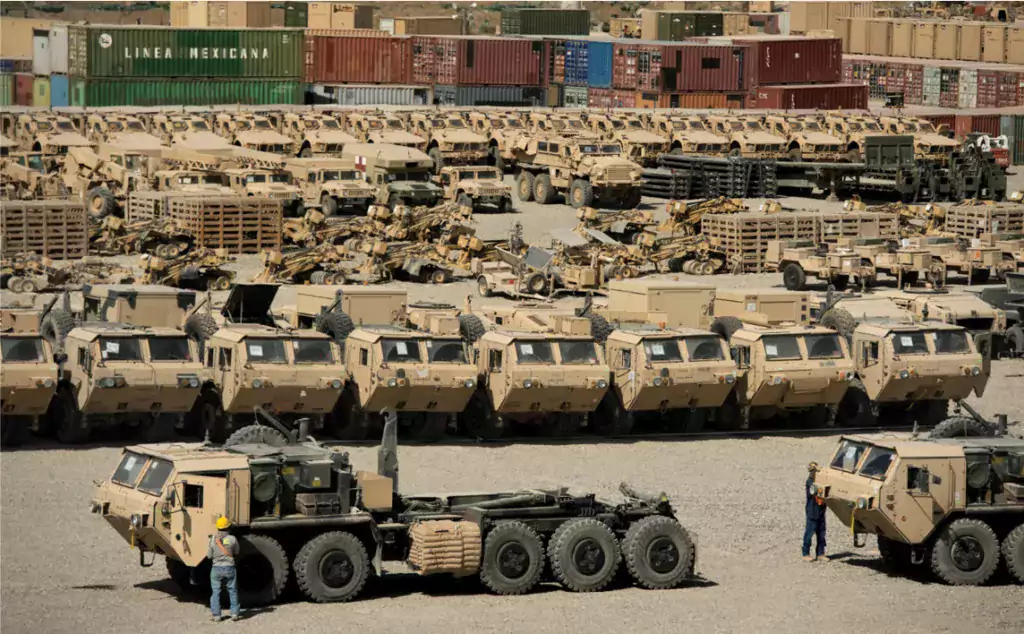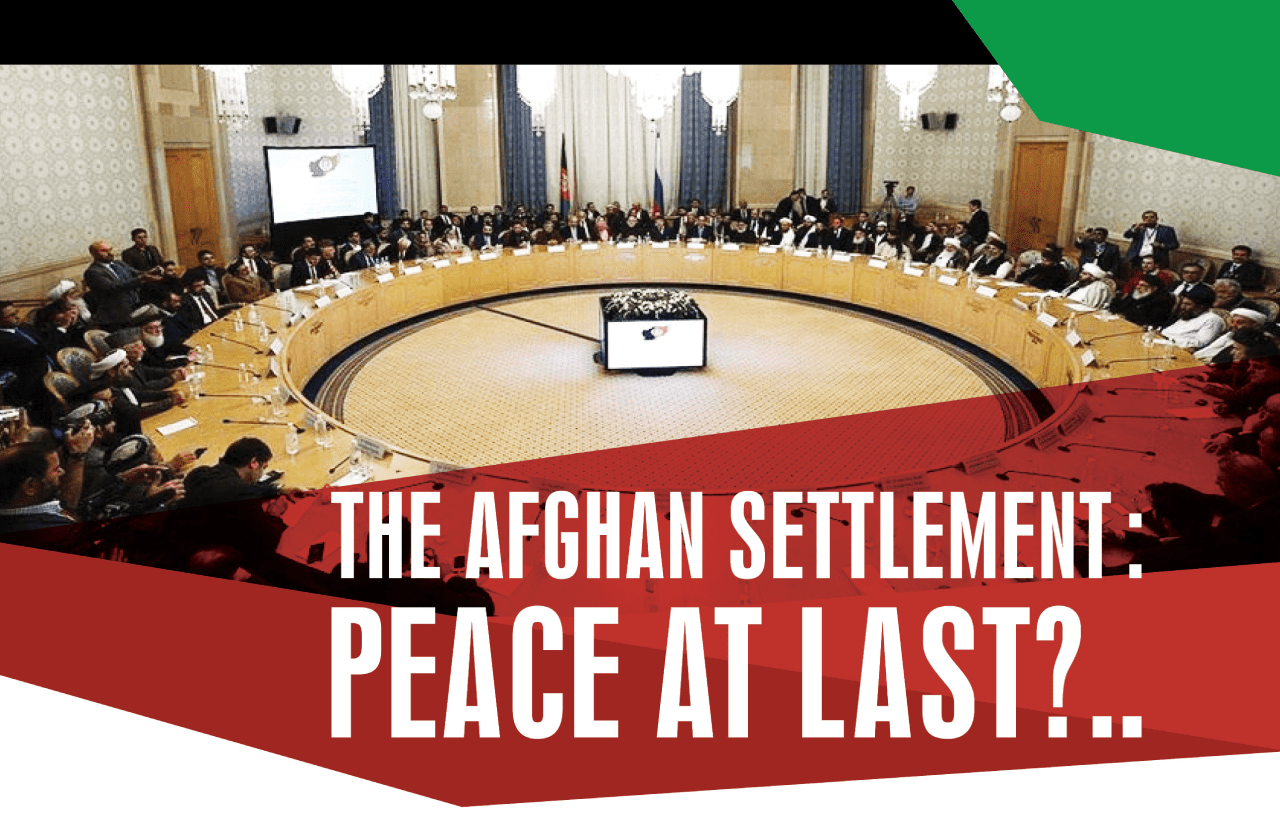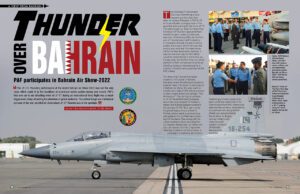After extensive rounds of negotiations that started in 2018, the Taliban envoy and US officials met to sign a peace agreement in Qatar’s capital, Doha. To summarize, the peace agreement has four key constituents. First, the Taliban will guarantee that Afghanistan’s land will not be used by any foreign armed forces to initiate any attack against the US or Allied forces. Second, all US-led forces shall be withdrawn from the region. Third, there shall be an immediate ceasefire between the two opposing forces. Last of all, a series of intra-afghan dialogue to ensure a smooth transition of power shall be initiated. If both parties keep to their assurances, US-led foreign forces could be retracted from Afghanistan by the year 2021. Other notable elements of the agreement include the release of 5000 Taliban prisoners by US and in return Taliban will free 1000 government officials. The US has about 14000 troops on the ground currently in Afghanistan. This force is joined by 17000 troops from 39 NATO Allies and Allied partners, serving in combatant and non-combatant roles in Afghanistan. The treaty has gathered immense support from the British Military, which has agreed to withdraw 200 troops out of the 1100 that are left in the region.
The international combat mission “Operation Enduring Freedom OEF” was initiated by the US in Afghanistan in 2001 following the tragic 9/11 attacks. The widespread vengeance frenzy allowed the military complex to rapidly gather public support and silence all voices advocating a less brutal approach. The operation waged on for 14 years and finally concluded in 2014. Despite the glaring failure of the operation, the subsequent endeavor was launched the very next year. “Operation Freedom’s Sentinel” began in 2015 and continues to this day. According to US Department of Defense, a whopping $1521.6 Billion has been incurred in war-related costs from September, 2011 till Mid of 2018. If this expenditure is dissected, 60 percent of the funding goes to affairs like fuel, armored vehicles, training and other facilities including transportation such as sea and air lifts. To this day, OFS teams continues to train, advise and assist Afghan National Defense and Security Forces (ANDSF) at the corps level, as well as with the Ministry of the Interior and Defense. According to a book published in 2013 titled ‘Investment in Blood’ by Frank Ledwidge, conflict in Afghanistan cost Britain approximately £37 Billion. Furthermore, the author calculates that by 2020, Britain would have spent an amount that could be utilized instead to pay for the entire careers of 5000 police officers or the same amount could be used to pay off the tuition fee for all current students in British higher education for the next decade. On the other hand, to finance war expenditure, the US is under overwhelming debt which it will be returning till 2023, with more than $600 billion in interest. One would assume that after such a staggering amount of resources exhausted, the Allied forces would have something to show for it. Sadly, that is not the case. Taliban forces now dominate and control more territorial area than they did in 2001 when the US siege began. Recently, they have escalated their war efforts and initiated more vigorous attacks on a daily basis against ground troops and military outposts throughout the war-torn country.

Despite Western media trying to form an elusive narrative, Afghanistan’s economy has not seen any signs of progress from 2001. War-related expenditure has unevenly doubled the size of Afghanistan’s economy since 2007 but these numbers don’t translate into real change. More than half of the Afghan population is still jobless and the economic growth has been crippled since 2015. This has led to major consequences, including a mass exodus of the population to neighboring countries. The brunt of this massive migration has been carried by Pakistan. According to the UNHCR, there are approximately 2.6 million registered refugees in 70 countries around the world, with the majority (95 per cent) being hosted by two countries, Pakistan and Iran. Currently, Pakistan hosts more than 1.4 million registered Afghans who have been forced to flee their homes because of these wars. Foreign investors still hesitate to invest in Afghanistan due to the high rate of corruption practices prevalent in the country, according to Transparency International corruption practice is among the worst in the world along with very weak security capabilities to protect foreign investments. The minerals sector is one of the promising sectors of Afghanistan. Even after Pentagon claimed that it could be turned into a $1 Trillion industry, Afghanistan was not able to grab any potential investors except China. After a huge investment, even China was unable to procure satisfactory results owing to lack of security and interest from the government. The Special Inspector General for Afghanistan Reconstruction documented $15.5 billion in waste, fraudulent practices and misuse in reconstruction efforts from 2008 through 2017. Most of the funds, the IG found, funds were wasted on plans that were rife with corruption and poorly managed. US investments that were meant to establish hospitals treated no patients, the educational institutes that were being funded were ghost schools and military bases for the Afghans were, for the most part, useless and later closed.
Conferring to the information given by the US Central Command Combined Air Operations Center, US air force dropped the highest number of missiles in a decade, crossing 7500 bombs. UN Assistance Mission in Afghanistan began documenting casualties in 2009, and it quickly came to light that about a 100,000 Afghans have been killed or wounded. In April, UN issued a report showing very alarming figures, showing that Afghan and US forces had killed more civilians in Afghanistan than the country’s armed groups had. Around 717 civilians were killed by Afghan and US forces, compared to the 531 by rebel fighters. By the end of 2019, around 2,400 American soldiers and more than 38,000 Afghan civilians have died due to conflicts. In 2019 only, there were more than 8,200 civilian casualties according to the UN Assistance Mission in Afghanistan (UNAMA). Estimated cost of medical and disability care will cross $350 billion in amount for veterans of Afghanistan and Iraq wars. Experts also project another trillion dollars in expenses, over a span of 40 years, for wounded and disabled war veterans.
Another concern is the sophisticated military equipment abandoned by US and allied forces in Afghanistan. The US military has lost about 100,000 metric tons of military apparatus which includes mine resistant vehicles, military vehicles and several other types of sophisticated equipment. This equipment was abandoned because it was too expensive to ship back after being used, adding wastage of millions of dollars. A report published in a US newspaper cited US military officials who revealed that more than $7 billion worth of military equipment is no longer needed and is being shredded and sold locally as scrap metal. Steps like these shows that the US military would rather waste its equipment rather than giving it away to its partners who have been their close allies. According to US officials, donating the gear to Afghan government is difficult because of complicated bureaucratic rules and they believe that Afghans could not maintain the gear. However, selling the same gear seemingly violates no rules and somehow all complicated bureaucratic channels are also bypassed.
According to UN, prior to US occupation, opium production in Afghanistan was all but eliminated. Presently, however, opium harvest is the major source of revenue for Afghans and military organizations. 2019’s World Drug Report published by United Nations Office on Drugs and Crime (UNODC) states that although opium is produced in over 50 nations, it is highly concentrated in Afghanistan, accounting for 82 percent of all global illicit opium production. Opium prices and trade declined in 2018, due to droughts that hit the other agricultural sectors and indebtedness of Afghan farmers increased as a consequence. Income for basic needs such as food, medical expenses and debt clearance are the most common usages of opium income. In a report last year, Special IG for Reconstruction mentioned that in spite of spending billions of dollars to control poppy cultivation, numbers showed that the efforts were apparently a ‘failure’. Afghanistan has seen developments in health and education with help from US Aid programs, but again, they are inadequate when compared to international standards. Mortality rate remains one of the highest in the world, while life expectancy is among the poorest. Education system is in chaos with girls still receiving very little schooling to no schooling at all, while education for boys is also meager.

Pakistan played a significant role in bringing Taliban and US to the table and finalizing the peace deal between them. US Secretary of State Mike Pompeo applauded Pakistan for its consistent efforts in Doha, Qatar. Talking to the press, Pompeo appreciated Islamabad’s efforts for facilitating negotiations in Afghanistan and asked Islamabad to help make Afghanistan a peaceful and prosperous place. It is imperative to keep in mind that after the US President called off talks, the first meeting between Taliban and Zalmay Khalilzad, U.S peace envoy for Afghanistan resumed in Islamabad, instead of Kabul or Qatar. Meanwhile, for India, the emerging state of affairs in Afghanistan are not only upsetting but also mandates that it has to rethink its $3 billion worth of investments in war torn nation. It is becoming exceedingly clear that India’s proxy plans are coming to a standstill and it will have to face grim circumstances in Afghanistan. It is becoming clearer that India entered Afghanistan more out of antagonism for Pakistan than for the love of Afghans. Its only underlying interest was in establishing a puppet government which could be used against Pakistan on diplomatic fronts, whenever required. However, being left out of Afghan talks and the peace deal, India will now focus on saving its geopolitical and financial interests in Afghanistan.
Achieving peace in Afghanistan will certainly be a difficult task and success is not guaranteed. All peace talks depend on the seriousness of the two sides which clearly don’t trust each other. Then again what option do they have? After more than 19 years of war, neither US nor the Taliban have been able to overcome the other. The current peace deal is only way forward but with one intriguing question….Will it bring long lasting peace in the region?








